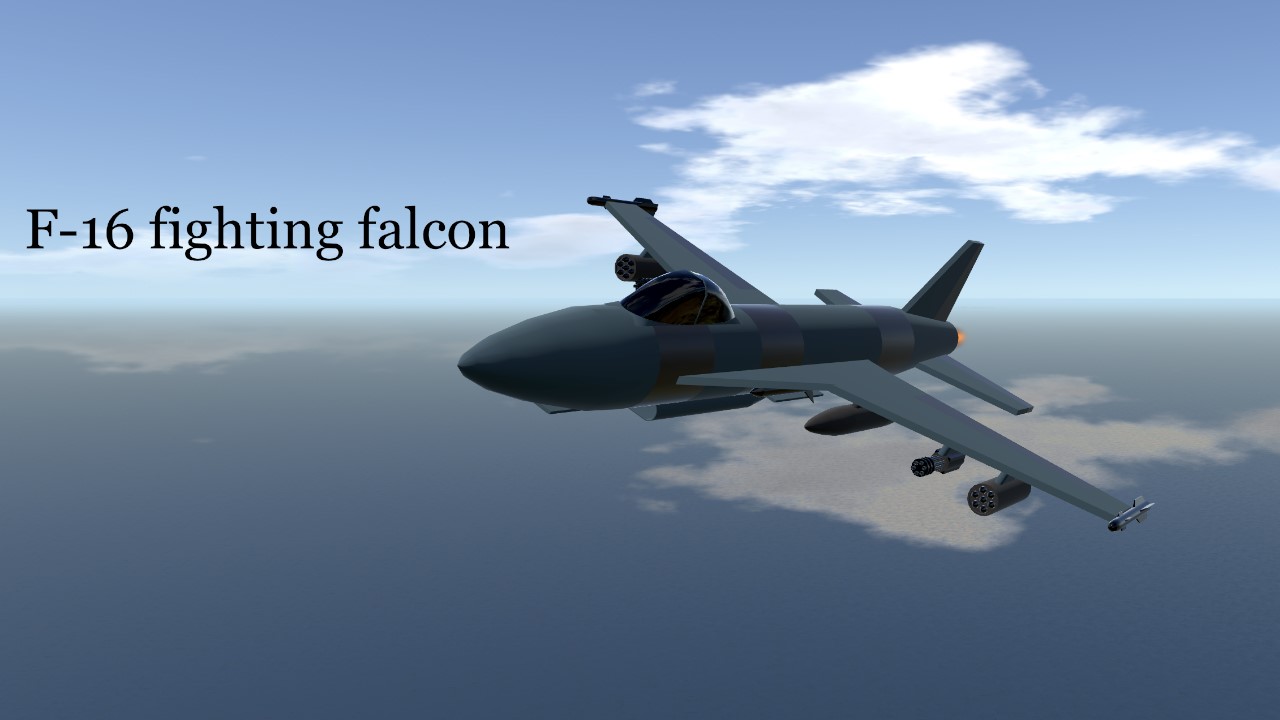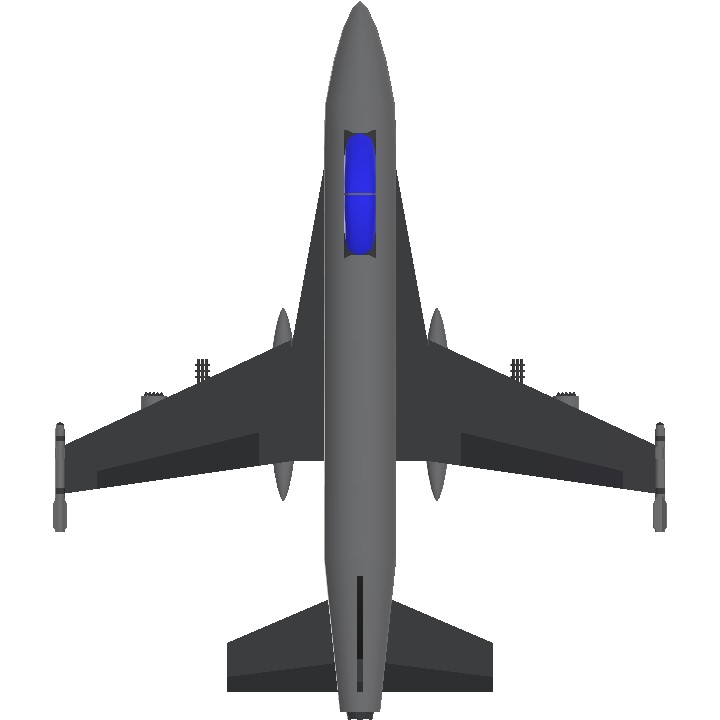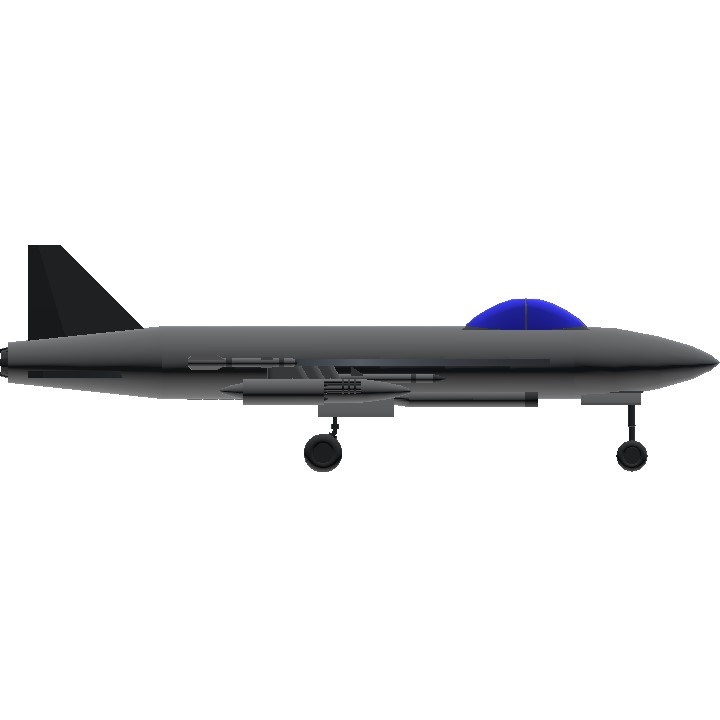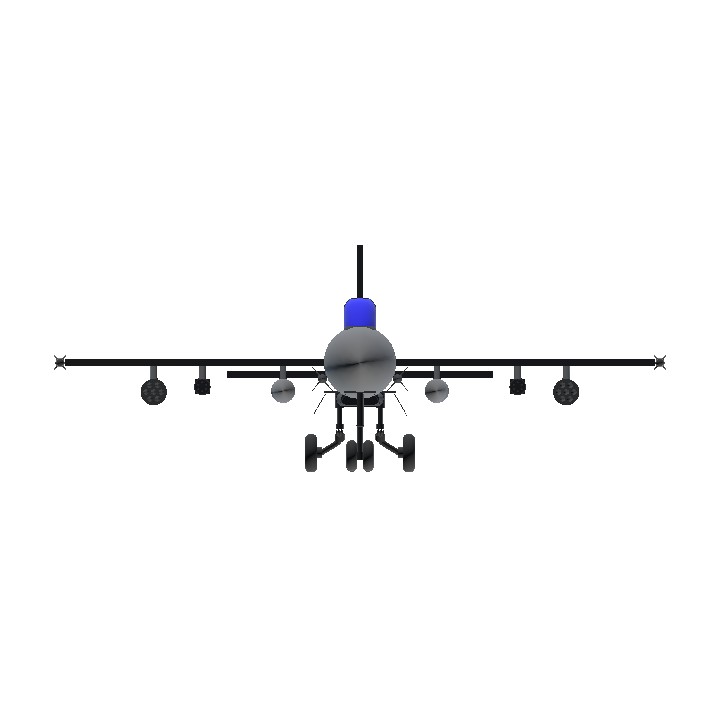HISTORY
The General Dynamics F-16 Fighting Falcon is an American single-engine supersonic multirole fighter aircraft originally developed by General Dynamics for the United States Air Force (USAF). Designed as an air superiority day fighter, it evolved into a successful all-weather multirole aircraft. Over 4,600 aircraft have been built since production was approved in 1976. Although no longer being purchased by the U.S. Air Force, improved versions are being built for export customers. In 1993, General Dynamics sold its aircraft manufacturing business to the Lockheed Corporation, which in turn became part of Lockheed Martin after a 1995 merger with Martin Marietta.
The Fighting Falcon's key features include a frameless bubble canopy for good visibility, side-mounted control stick to ease control while maneuvering, an ejection seat reclined 30 degrees from vertical to reduce the effect of g-forces on the pilot, and the first use of a relaxed static stability/fly-by-wire flight control system that helps to make it an agile aircraft. The F-16 has an internal M61 Vulcan cannon and 11 hardpoints.
In addition to active duty in the U.S. Air Force, Air Force Reserve Command, and Air National Guard units, the aircraft is also used by the U.S. Air Force Thunderbirds aerial demonstration team, the US Combat Air Command F-16 Viper Demonstration Team, and as an adversary/aggressor aircraft by the United States Navy. The F-16 has also been procured to serve in the air forces of 25 other nations. As of 2015, it was the world's most numerous fixed-wing aircraft in military service.
Development
US Vietnam War experience showed the need for air superiority fighters and better air-to-air training for fighter pilots. Based on his experience in the Korean War and as a fighter tactics instructor in the early 1960s, Colonel John Boyd with mathematician Thomas Christie developed the energy–maneuverability theory to model a fighter aircraft's performance in combat. Boyd's work called for a small, lightweight aircraft that could maneuver with the minimum possible energy loss and which also incorporated an increased thrust-to-weight ratio. In the late 1960s, Boyd gathered a group of like-minded innovators who became known as the Fighter Mafia, and in 1969, they secured Department of Defense funding for General Dynamics and Northrop to study design concepts based on the theory.
Air Force F-X proponents were opposed to the concept because they perceived it as a threat to the F-15 program, but the USAF's leadership understood that its budget would not allow it to purchase enough F-15 aircraft to satisfy all of its missions. The Advanced Day Fighter concept, renamed F-XX, gained civilian political support under the reform-minded Deputy Secretary of Defense David Packard, who favored the idea of competitive prototyping. As a result, in May 1971, the Air Force Prototype Study Group was established, with Boyd a key member, and two of its six proposals would be funded, one being the Lightweight Fighter (LWF). The request for proposals issued on 6 January 1972 called for a 20,000-pound (9,100 kg) class air-to-air day fighter with a good turn rate, acceleration, and range, and optimized for combat at speeds of Mach 0.6–1.6 and altitudes of 30,000–40,000 feet (9,100–12,000 m). This was the region where USAF studies predicted most future air combat would occur. The anticipated average flyaway cost of a production version was $3 million. This production plan was hypothetical as the USAF had no firm plans to procure the winner.
Specifications
General Characteristics
- Created On Mac
- Wingspan 30.9ft (9.4m)
- Length 36.5ft (11.1m)
- Height 11.4ft (3.5m)
- Empty Weight 10,974lbs (4,977kg)
- Loaded Weight 12,023lbs (5,453kg)
Performance
- Power/Weight Ratio 0.934
- Wing Loading 61.6lbs/ft2 (300.9kg/m2)
- Wing Area 195.1ft2 (18.1m2)
- Drag Points 2619
Parts
- Number of Parts 51
- Control Surfaces 5
- Performance Cost 335




